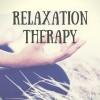CYBERMED LIFE - ORGANIC & NATURAL LIVING
CYBERMED LIFE - ORGANIC & NATURAL LIVING
 Relaxation Therapy: A relaxation technique (also known as relaxation training) is any method, process, procedure, or activity that helps a person to relax; to attain a state of increased calmness; or otherwise reduce levels of pain, anxiety, stress or anger. Relaxation techniques are often employed as one element of a wider stress management program and can decrease muscle tension, lower the blood pressure and slow heart and breath rates, among other health benefits.
Relaxation Therapy: A relaxation technique (also known as relaxation training) is any method, process, procedure, or activity that helps a person to relax; to attain a state of increased calmness; or otherwise reduce levels of pain, anxiety, stress or anger. Relaxation techniques are often employed as one element of a wider stress management program and can decrease muscle tension, lower the blood pressure and slow heart and breath rates, among other health benefits.
People respond to stress in different ways, namely, by becoming overwhelmed, depressed or both. Yoga, QiGong, Taiji, and Pranayama that includes deep breathing tend to calm people who are overwhelmed by stress, while rhythmic exercise improves the mental and physical health of those who are depressed. People who encounter both symptoms simultaneously, feeling depressed in some ways and overexcited in others, may do best by walking or performing yoga techniques that are focused on strength.